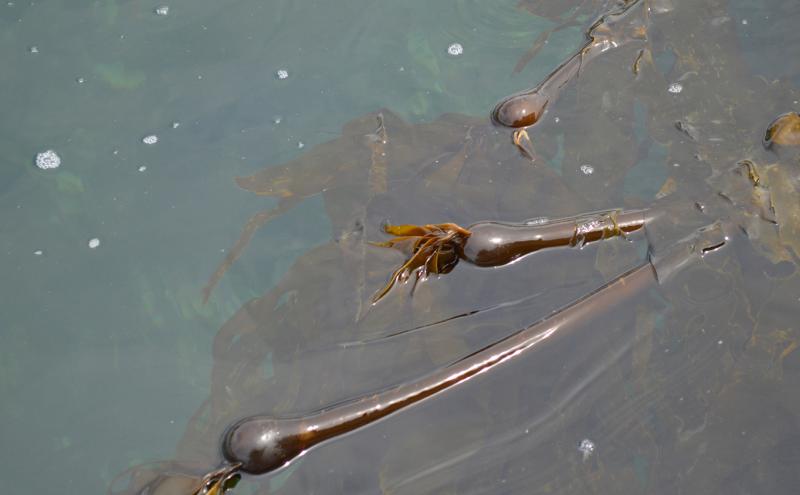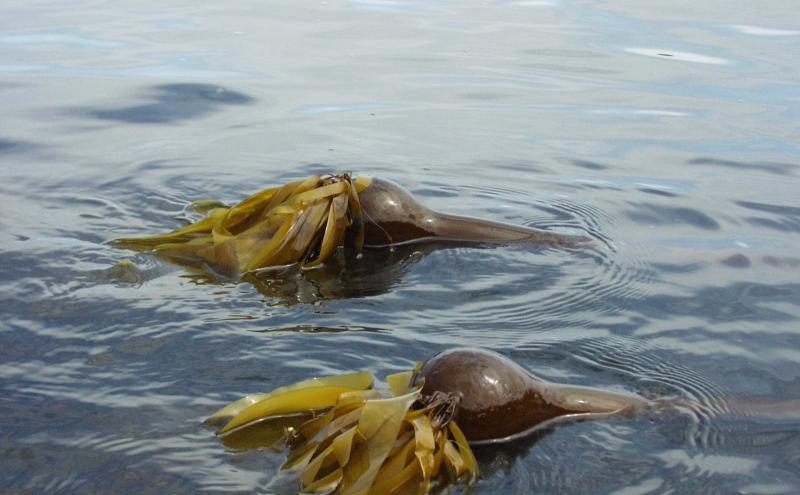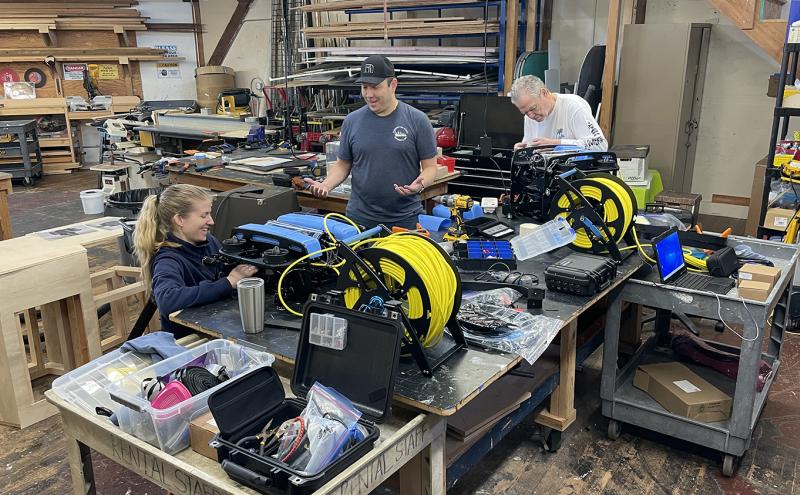
Just off the Elliott Bay waterfront, beneath and around piers and ferries, a mystery grows by the day — up to several feet per day, in fact. Thick forests of brown-green bull kelp wave ribbonlike appendages in ocean currents.
Found only in temperate waters, a thriving, nurturing kelp canopy and understory host hungry young salmon at an all-you-can-eat buffet, a Pacific herring's breeding ground, and growing juvenile rockfish larvae.
Yet when the Port of Seattle tried to sow new kelp forests near Seattle's Terminal 91, a mystery resulted — why didn't the kelp increase as expected? Why was kelp thriving in Elliott Bay but lackluster in a similar area? Could the cause be competition from algae? Water temperatures/quality? Or something else?
So the Port kicked off a groundbreaking partnership in the summer of 2022 — a partnership now beginning to reveal the bay’s secrets. A two-year Seattle Aquarium pilot project to study and map kelp forests combines expertise in kelp forest ecosystems, underwater survey techniques, and novel research technology to gather data and translate results.
Learn more about the Port-Aquarium partnership
The interest in preserving and reviving our region's kelp beds stems from its numerous benefits to our region’s ecology and economy. Kelp is increasingly being used in our habitat restoration efforts. Kelp forests provide a critical link in the marine food chain which makes an enormous economic contribution by boosting rearing habitats for fisheries. Carbon absorption and nitrogen removal attributes may decrease acidification impacts in the Salish Sea. Many products now include kelp products which could be an ingredient for new businesses.
"The kelp ecosystems are imperiled in Washington state," says Port of Seattle Senior Environmental Program Manager Kathleen Hurley. "Preserving kelp forests is important for Puget Sound health, and the Port is part of those preservation efforts."
In South Puget Sound, some kelp forests have declined by up to 90%, endangering ecological and economic resources. But to bring kelp back and keep existing forests alive, the secrets of the Salish Sea must be revealed.
Diving in
Exploring the unknown first drew marine biologist Dr. Zachary Randell to the field. He learned to scuba dive in Alaska, where he found rocky reefs to contain endless mysteries. Randell now leads the Seattle Aquarium's kelp investigations as a research scientist.
Temperate waters from Alaska to California make diving challenging — the cold water provides more nutrients, which leads to more plankton and algae, but decreases the visibility underwater.
So, to illuminate the deep's mysteries, the Aquarium uses the customized, Blue Robotics-manufactured Remotely Operated Vehicle Nereo. The bright blue ROV Nereo uses downward-facing lights to spotlight Elliott Bay's relatively shallow seafloor (5-40 meters depth), while performing underwater gumshoe work.
"The ROV explores areas we wouldn't necessarily be able to access with divers easily, and we can cover a lot of ground while doing so," Randell says.
ROV Nereo's lights gather imagery at a consistent scale, with increased color and definition. Hours filmed last year captured creatures finding food, habitat, and refuge in the kelp forest. ROV surveys focus on August through October when visibility is best and kelp's spring-fall growing season is winding down.
Back in the lab, researchers are training open-source artificial intelligence programs on how to identify various creatures and different seafloor types within the film. For example, distinguishing a sea star from a sea urchin, fleshy red algae from green or brown algae, and soft-sediment from a hard substrate.
Once fully trained, the AI algorithms can process thousands of hours of film in a fraction of the time a human could, providing large amounts of data. Staff combines Nereo's efforts with subtidal monitoring sites and tools, such as King County's water quality monitoring stations.
The information is then plugged into models regarding habitat suitability for new kelp growth. For example, the algorithm may indicate that habitat is particularly friendly to kelp based on known variables such as substrate (ocean floor type) and species present. If kelp doesn't succeed, researchers know another variable is influencing survival.
"Kelp is bizarre,” Randell says. Although kelp behaves and looks like a plant, it’s a protist, the same group as single-cell amoebas. Reviewing film reveals kelp's wide-reaching impact and beauty.
For example, salmon hatch in rivers, then come into Puget Sound to dine on the eggs of Pacific herring, which spawn in kelp beds. After fattening up on the caviar, salmon migrate to open seas. Without the eggs, salmon face reduced survival rates. A lack of salmon can lead to a depletion of healthy orca populations, which feed on salmon.
The film revealed surprises, too — such as a remarkable abundance of kelp crabs, which munch on kelp throughout its growing season. "It's like a party of kelp-crab acrobats climbing ropes in a Cirque du Soleil performance," Hurley says. The crabs appear to vanish in the winter months. Could these creatures be hampering the kelp's growth?
"There are mysteries nested within mysteries," Hurley says. "You peel back a layer, which reveals another question." It's too early to tell, so the project will continue its investigations this summer.
Other contributing factors for kelp survival or demise could depend on environmental variables — seafloor material, water temperatures/quality, kelp spore placement and movement, ocean currents or small-scale water flow differences such as water movement between two piers.
New experimental projects result as well. For example, the Port partnered with NASA to bring in undergraduate and graduate students to map kelp beds using satellite imagery, which can help understand historical changes and further-flung locations.
As another example, the team, in partnership with the Department of Natural Resources is experimenting with octopots — small ceramic pot homes that may attract octopi, the kelp crab's natural predator. "It's a low-cost, low-tech experiment," Hurley says.
June is Orca Action Month, the perfect time to shine a spotlight on the health of local kelp, which plays a significant role in supporting these mighty hunters. “The Port of Seattle is committed to collaborations to restore the Salish Sea ecosystem and all those dependent on it — from kelp to killer whales, to the climate and commerce,” says Port of Seattle Commissioner Fred Felleman.








